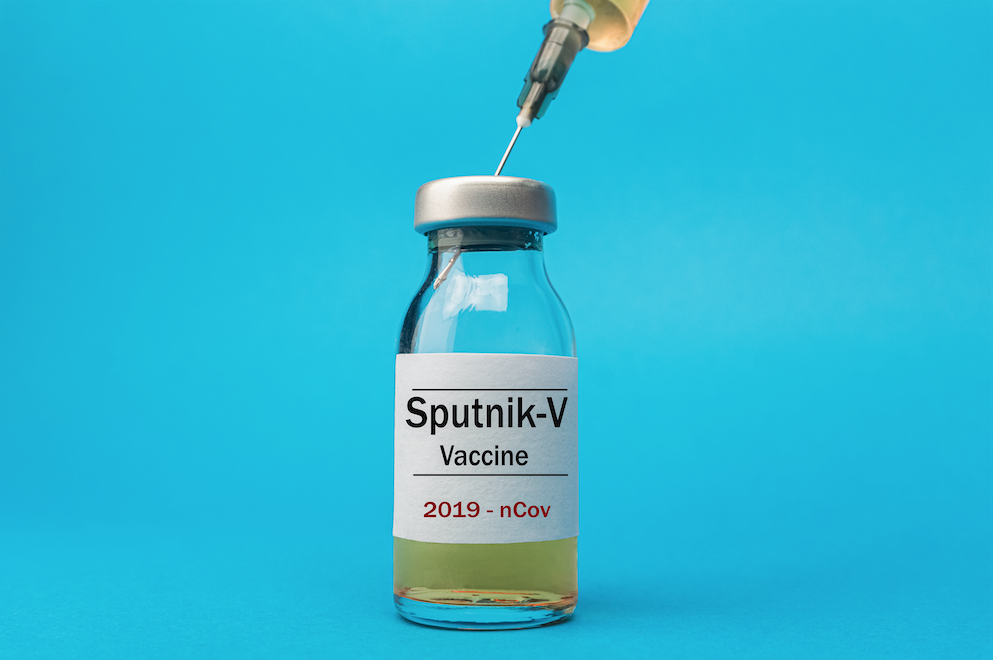Science’s COVID-19 reporting is supported by the Pulitzer Center and the Heising-Simons Foundation.
Another day, another promising COVID-19 vaccine? A Russian institute announced today its vaccine candidate has had remarkable success in an efficacy trial, just 2 days after the widely celebrated news from Pfizer and BioNTech that their vaccine had greater than 90% efficacy. The Russian report, however, is being met with raised eyebrows—and some outright guffaws.
In a press release, the Gamaleya National Center of Epidemiology and Microbiology in Moscow said an interim analysis of a large-scale trial underway in Russia had found 92% efficacy for its “Sputnik V” vaccine. The release quoted the Russian minister of health saying the results demonstrate that Sputnik V “is an efficient solution to stop the spread of coronavirus infection.” Yet it also noted the review covered just 20 total COVID-19 cases in the vaccinated and placebo groups—far too few for the claim to be convincing, experts inside and outside of Russia say.
In contrast, they note, Pfizer and BioNTech analyzed 94 cases to make their efficacy claim, and other vaccinemakers plan to wait for at least 50 or more COVID-19 cases to accumulate in a trial to assess a candidate’s worth. “It’s very difficult to explain [the Gamaleya] announcement,” says Svetlana Zavidova, a Moscow-based lawyer who heads Russia’s Association of Clinical Trials Organizations and closely follows COVID-19 vaccine R&D in the country. “I’m afraid they looked at the results of Pfizer and added 2%.”
The claims don’t pass “the smell test,” adds Wayne Koff, who heads the nonprofit Human Vaccines Project, which is attempting to improve the design of future vaccines. (The Gamaleya media contact on the press release did not reply to Science’s request for an interview.)
The Gamaleya vaccine, made with support from the Russia Direct Investment Fund, uses two different shots in what’s known as a prime-boost scheme. Both shots rely on supposedly harmless adenoviruses as gene delivery “vectors”: Researchers have engineered them to hold the gene for the surface protein of SARS-CoV-2, the virus that causes COVID-19. The first shot used adenovirus 26 (Ad26) as the vector for the coronavirus surface protein, called spike, while the second used adenovirus 5 (Ad5). The 20 cases described in the press release were detected among more than 16,000 people in the 40,000-person study. Participants were evaluated for COVID-19 21 days after receiving the Ad26 shot, when they came to the trial site to receive their Ad5 booster.
The U.S. Food and Drug Administration “wouldn’t have accepted a report on 20 cases,” says John Moore, a vaccine researcher at Weill Cornell Medical College. He regards the announcement as “Putinology,” referring to the Russian president. “Why is Russia doing this?” Moore asks. “It’s the international vaccine race. They want to be seen to be keeping up with their competitors in other countries. It’s clearly a rushed out announcement. But it doesn’t mean it’s wrong.”
The Gamaleya press release said the study had not found any serious side effects, but vaccine researcher Julie McElrath from the Fred Hutchinson Cancer Research Center says the Ad5 vector worries her. McElrath co-authored a commentary in The Lancet last month that raised concerns about using Ad5 as a vehicle for COVID-19 vaccines, because it was linked to a catastrophe in an HIV vaccine study 13 years ago. In that trial, vaccine recipients had higher rates of HIV infection than those in the placebo group; the Ad5 vector has become the leading suspect for the problem. “Certainly, we need multiple vaccine strategies to end the pandemic, so I look forward to seeing additional data after a longer time interval,” McElrath says.
One month before Sputnik V’s efficacy trial launched in September, the Gamaleya vaccine received a highly controversial approval from Russian regulatory authorities, which allowed it to be given to people outside of a clinical trial. The Gamaleya release says the vaccine has been used in “red zones” of Russian hospitals, which means health care workers and other high-risk groups. To date, the release says 10,000 people have received the vaccine under this authorization. “[T]he civil use of the vaccine out of clinical trials also confirmed the vaccine’s efficacy rate of over 90 percent,” the Gamaleya release says without offering any evidence to back this claim.
Koff, who for many years headed the AIDS vaccine division of the U.S. National Institutes of Health (NIH), did allow that the efficacy claim is an “interesting observation,” though one that is hard to evaluate because Gamaleya, like Pfizer and BioNTech, offered scant data to back up their press release. He also notes that neither the center nor the Russian government has tried to harmonize their vaccine push with international standards for efficacy trials and vaccine approvals.
Pfizer and BioNTech and many other companies have made their trial protocols public, but Gamaleya has not. Zavidova notes that she learned more about the details of Gamaleya’s study on a clinical trials website maintained by NIH than she did on a similar registry in Russia, which has “only the name of this protocol without any details.”
In the press release, Alexander Gintsburg, the head of the Gamaleya, promises “mass vaccination in Russia against COVID-19 in the coming weeks.” If the Gamaleya vaccine does become widely available, will Zavidova take it, given that the spread of COVID-19 has rapidly accelerated in Russia? “No,” she says. “I will wait a little bit more.”
COVID-19 Update: The connection between local and global issues–the Pulitzer Center's long standing mantra–has, sadly, never been more evident. We are uniquely positioned to serve the journalists, news media organizations, schools, and universities we partner with by continuing to advance our core mission: enabling great journalism and education about underreported and systemic issues that resonate now–and continue to have relevance in times ahead. We believe that this is a moment for decisive action. Learn more about the steps we are taking.
